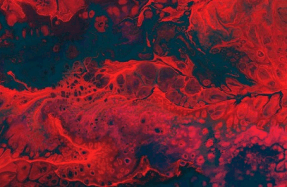At the Bath House
 Illustration by Anne le Guern
Illustration by Anne le Guern Before there was love, before lovers and children born out of wedlock, before we knew the names of things, there were the bath houses of my childhood.
The bath house was the gathering place of women and girls, wherein no boys or their fathers were allowed. Once monthly, our mothers and their girls — good girls and bad girls, girly girls and pretty or not-so-pretty-or-whatever girls, barely-there girls and almost-women girls, girls unwanted because they were girls, girls like me in awe-fear of their mothers, and girls who talked down to their mothers just as their fathers talked down to them — were all there for a common cause. We needed a good sloughing off of ttae (때), meaning dirt in Korean.
Soaking came first. Like slabs of marinating meat, we had to soak, as our mothers had taught us, for as long and as abidingly deep as possible, so that our skins — that unruly sheath of an organ draped and stretched over our out-growing bodies — could, with the grace and redemptive power of water, be lifted, dear lord, of its burdensome ttae, that worldly substance that would otherwise infiltrate our innards and our wants and wantnots. So we listened, and we sat our small asses down in the much too uncomfortable water for a long, long time until our young skins became medium rare, slough-ready, ready for our initiation: the slow tenderizing of girls into women.
We would learn about pain this way, about the many facades used to disguise pain and the delusions of grandeur that came with pain, about how we might stretch ourselves to survive pain, and about the gratification of delayed pain. We would learn about perseverance this way, the waiting, oh the waiting, the many different kinds of waiting a woman needed to master for herself, her children, and her mate, in order that she move through the seasons of her life well. We mustn’t hurry, our mothers said.
Discomfort was the idea. Crammed inside the cracked ceramic-tiled hot tub like little fish cakes swimming in a simmering bowl of ramen noodles were bodies — big and small, more small than big, some vertically inclined, some horizontal. There were busy bodies and lazy bodies and work-in-progress bodies; some were smocked with industrious skins, taut tapestries achieved less through athleticism than toil, seated in touching proximity to those with droopy, wet, wrinkled rag-like skin. These were the different kinds of armor belonging to those who had lived through wars, who were still waiting for husbands or sons gone missing long ago to come home. We
You’re reading a preview, subscribe to read more.
Start your free 30 days





